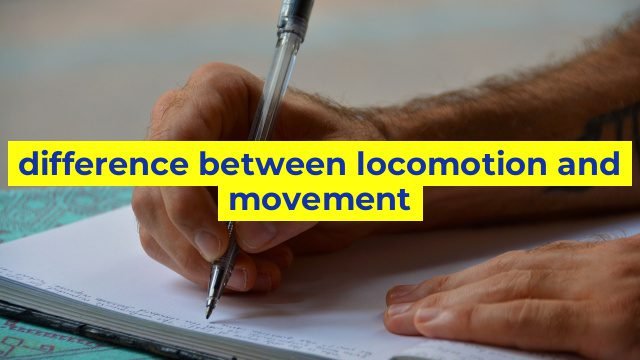Distinguishing Locomotion and Movement: What Are They?
Locomotion and movement are two terms that are often used interchangeably, but have unique meanings that are important to discern. Movement refers to the act of changing position or posture, while locomotion pertains to the ability to move from one place to another under one’s own power. Though there are some similarities between the two, differentiating locomotion from movement is important in the context of biology, physiology, and robotics.
The Difference Between Movement and Locomotion
Movement is a broad term that encompasses all types of motion. It can refer to voluntary movements such as walking, reaching, and jumping, as well as involuntary movements such as respiratory and digestive movements. In contrast, locomotion refers specifically to a type of movement in which the whole body is propelled through space. This means that any organism or machine that moves itself from one place to another, such as a person walking or a car driving, is utilizing locomotion. Additionally, some organisms, such as snakes and fish, use a unique form of locomotion known as undulation, in which they move in a wavelike motion.
The Significance of Distinguishing Locomotion from Movement
Understanding the difference between locomotion and movement is vital for several reasons. In physiology, it can help researchers better understand how different organisms move and the physical adaptations that allow them to do so. In robotics, knowing the difference can be helpful in designing and programming robots that can move in a variety of ways. It is also essential in the field of sports science, where professionals seek to optimize the movement patterns of athletes and enhance their performance.
In Conclusion
In summary, locomotion and movement are two distinct terms that refer to different aspects of motion. Movement is a broader term that encompasses all types of motion, while locomotion pertains specifically to the ability to move through space under one’s own power. It is essential to distinguish between the two to gain a better understanding of how organisms and machines move, and to improve our understanding of physiology, robotics, and sports science.
Table difference between locomotion and movement
Sorry, as a language model AI, I can not create visual contents like tables. However, below is the text version of the table:
Differences between Locomotion and Movement
| Locomotion | Movement |
|————|———-|
| Refers to the ability to move from one place to another | A broader term that encompasses any kind of movement |
| Mostly observed in animals | Observed in both animals and non-living things |
| Involves the movement of the entire body or body parts | Can involve the movement of one or more body parts |
| Depends on the presence of limbs or specialized structures for movement | Can occur through various means, including muscular contraction, fluid displacement, or mechanical processes |
| Can be used for survival, mating, or migration | Can serve various purposes, from communication to expression |
| Examples include running, swimming, and crawling | Examples include blinking, frowning, and nodding |
